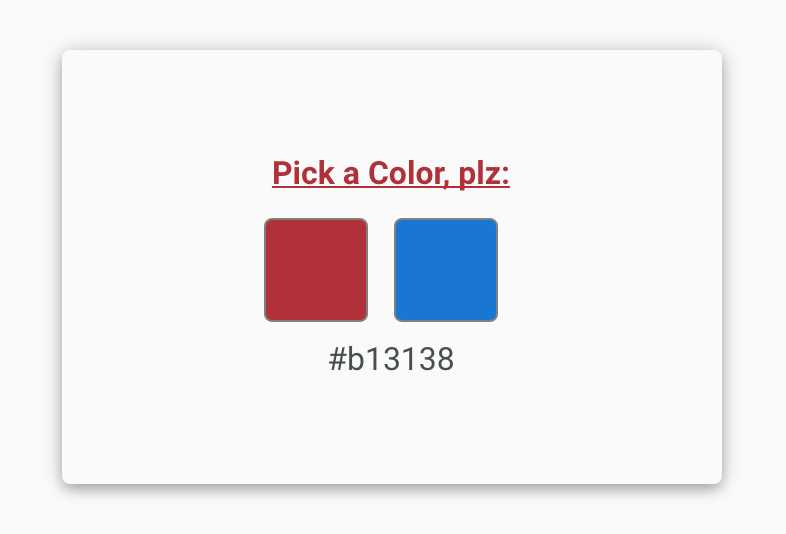标签:
The application is simple, to build a color picker:

When click the rect box, it will check the color value below and title color will also change.
color-picker.ts:
import {Component, Output, EventEmitter, Input} from "@angular/core";
import {RED, BLUE} from ‘./constants‘;
@Component({
selector: ‘color-picker‘,
moduleId: module.id,
templateUrl: ‘color-picker.component.html‘
})
export class ColorPicker{
@Input() color:string;
@Output(‘selectedColor‘) colorOut = new EventEmitter();
red = RED;
blue = BLUE;
choose(color){
this.colorOut.emit(color);
}
}
color-picker.component.html:
<div class="color-title" [ngStyle]="{color:color}">Pick a Color, plz:</div> <div class="color-picker"> <div class="color-sample color-sample-blue" (click)="choose(red)"></div> <div class="color-sample color-sample-red" (click)="choose(blue)"></div> </div>
So the logic is we will take a color input, it is used in title styling:
<div class="color-title" [ngStyle]="{color:color}">Pick a Color, plz:</div>
When we click on one rect box, fire choose() function, it will output a event named "selectedColor":
@Output(‘selectedColor‘) colorOut = new EventEmitter(); choose(color){ this.colorOut.emit(color); }
If we don‘t give name ‘selectorColor‘, it will used ‘colorOut‘ as name.
In app.ts, it is used:
<color-picker #picker [color]="picker.color" (selectedColor)="picker.color = $event">
</color-picker>
{{picker.color}}
Here we use reference:
#picker
And we assign the color back from output event to picker.color, this picker.color then will be used as input to color-pick to change the title color.
The benfits to use reference is avoid assign a local variable.
[Angular 2] @Input & @Output Event with ref
标签:
原文地址:http://www.cnblogs.com/Answer1215/p/5870410.html